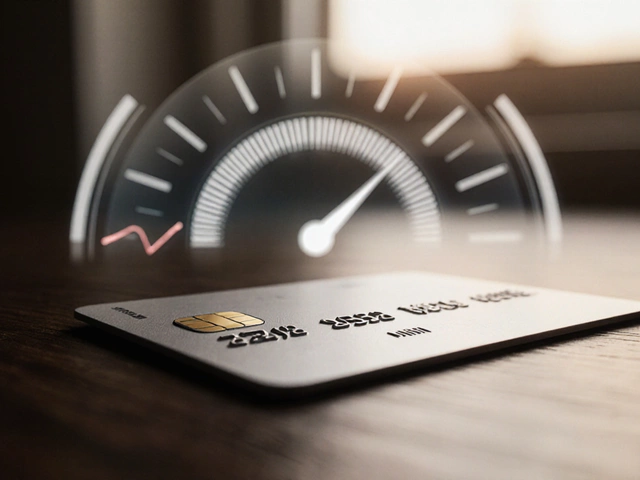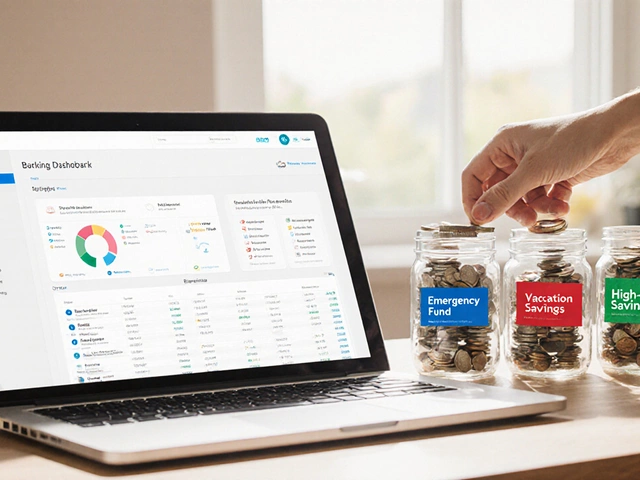
You've probably heard it tossed around if you're getting into the stock market: the '15-minute rule.' Sounds intriguing, right? Well, it's quite the gem in the trading world. This isn't just a fancy term but a strategy grounded in practicality for quick decision-making.
Here's the deal: the 15-minute rule is a strategy that encourages traders to make decisions within the first or last 15 minutes of the market. Why those times? They're often when the market shows strong trends or reversals. Basically, it's about striking while the iron is hot, riding the volatility wave before it settles into dull predictability.
This nifty trick helps traders avoid getting caught up in the chaos or excitement of the day. It forces you to trust your strategy and stick to it without hesitation. But how exactly do you apply it effectively? We'll dive into that, exploring how this rule can plug into your trading routine, spotlighting what makes it handy for both rookies and seasoned traders alike.
- Understanding the 15-Minute Rule
- How It Benefits Traders
- Applying the Rule Effectively
- Tips for Optimal Use
Understanding the 15-Minute Rule
The 15-minute rule in stock trading might sound simple, but don't underestimate its power. It's like the cheat sheet of trading, focusing on those crucial market minutes that pack a punch. So why the first or last 15 minutes? Well, these times are often when the market makes significant moves flipping from nighttime quiet or closing the day on a high note.
During the first 15 minutes of the trading day, the market usually reacts to news that came out overnight and adjusts prices accordingly. This period reflects all that pent-up energy. According to a quote from financial analyst Tom Essaye, "The opening is crucial because it encapsulates reactions from the news and reports, laying down the law for the trading day."
“It's a temperature check of the market's mood.” — Tom Essaye, Financial Analyst
Interestingly, the last 15 minutes can be equally telling. As traders rush to finalize positions before the market closes, there can be significant price shifts. Traders might refine their positions, adding or offloading shares based on the day's activity, setting up for the next trading session.
The Mechanics
The whole idea is to make quick, informed decisions to capitalize on volatility. It's less about predicting the market and more about reacting to it smartly. You'll decide if the market trends align with your strategies, and in these 15 minutes, you either seize the opportunity or pull back.
Many traders keep an eye on day trading indicators during this time, such as moving averages or volume spikes, which can signal whether to buy or sell. Are there any stats to prove its importance? Check out this simple breakdown below, capturing typical price activities during these minutes:
| Time | Price Movement | Trade Volume |
|---|---|---|
| First 15 Min | High Volatility | Increased |
| Last 15 Min | Substantial Swings | Peak Levels |
More seasoned traders use the 15-minute rule as a crucial part of a broader strategy. Newbies might see it as a shortcut to understanding when to pay extra attention. But remember, while this rule helps cut through the noise, it should complement, not replace, thorough research and thoughtful planning. Whether the market is soaring or crashing, these strategies help you make the most informed choices in a tight window.
How It Benefits Traders
The 15-minute rule is like a pocket-sized tool for traders, juggling less stress and more precision in stock decisions. It offers a clear structure to your day, especially for those deep into day trading. So, let's break it down.
Quick Decision Making
For starters, it hones quick decision-making skills. When you limit your action to those first or last 15 minutes, you sharpen your ability to spot trends or pitfalls fast. It's a skill that can mean the difference between making a rewarding move or holding onto losing ground.
Identify Patterns Early
If you're in the stock market, identifying patterns is gold. The market often reveals significant trends in those first 15 minutes post-opening or before closing. Being attuned to these can provide insights into the day's trajectory, making the chaos of the stock movement just a tad predictable.
Reduce Emotional Trading
This rule keeps the emotional rollercoaster at bay. By sticking to a 15-minute window, you limit over-trading and curb the impulse to react to every dip and surge. Emotion-driven trades often lead to regrets—and empty pockets. So, it's a smart way to stay cool and collected.
Time Management
Hey, life isn't just about trading, right? The 15-minute rule can free up your schedule, allowing more time for other pursuits. You don't need to keep glued to screen the whole day, nibbling your nails over every tick up or down. Use your time wisely and live life a little!
At the heart of it, the 15-minute rule boils down to efficiency and peace of mind. With every trade, you learn to embrace uncertainty, all the while trusting a proven strategy. Whether it's the morning buzz or the afternoon slump, it helps bring focus and decisiveness to your trading day.

Applying the Rule Effectively
So, you've got the gist of the 15-minute rule, but how do you put it into action to really benefit from it? Let's walk through a few practical steps that can level up your trading game. Remember, the objective is to harness those critical 15 minutes to make strategic decisions, cutting down on second-guessing and emotional trading.
Step 1: Preparation is Key
Before the market bell rings, do your homework. Know which stocks you're eyeing and set your target prices. Check out market news, economic indicators, or any updates that might affect your choices. This prep work ensures you’re not scrambling once the market starts moving.
Step 2: Focus on Liquidity
In those initial 15 minutes, focus on stocks that have high liquidity. These are the stocks with enough trading volume so that your orders get filled without dramatic price changes. A trader's dream, right? This aspect can literally make or break the success of this strategy, ensuring smooth transactions.
Step 3: Use a Quick and Reliable Platform
Technology can be your best friend or worst enemy. Use a trading platform you trust, which is fast and reliable. In situations where seconds count, a laggy platform can be disastrous! Double-check your tech setup to avoid tech-induced tantrums.
Step 4: Limit Your Risks
Set stop-loss orders to cap your potential loses and have sell targets in mind for potential wins. This preparation helps you exit a trade quickly if it moves against you without panicking. Trust me, market volatility can be intense, and these safeguards are like your trading airbags.
Now, to sprinkle a bit of statistical zest, here's a quick look at stock movements typically observed in those magical 15 minutes.
| Time (Minutes) | Average Price Change (%) | Volume Spike |
|---|---|---|
| 0-5 | 1.2 | High |
| 6-10 | 0.8 | Moderate |
| 11-15 | 0.5 | Low |
These numbers can help you gauge whether to jump in or hold off for better traction. Armed with this framework, the 15-minute rule isn’t just a trading trick—it’s an informed strategy for focusing your efforts and, hopefully, maximizing your returns.
Tips for Optimal Use
Alright, if you're all set to roll with the 15-minute rule, good choice! But like any strategy, knowing the nuts and bolts is key to making it work without hiccups. Here’s how you can milk the best out of this strategy.
Start with a Game Plan
Before the market opens, get your homework done. Know which stocks you're going to watch. This helps streamline your focus and saves you from wandering off when the buzzer rings at the market open.
Know the Levels
Identify critical support and resistance levels in your chosen stocks. Why does this matter? Because these are often the zones where big moves kick off, especially during those first 15 minutes. Keep your eyes peeled!
Use Technology to Your Advantage
Make use of tech like trading software to set alerts within the first or last 15 minutes. Also, consider platforms that allow for setting stop-loss orders so you can cap potential losses while letting winners ride when using the 15-minute rule.
Keep Your Emotions in Check
The market can be a real emotional rollercoaster. It's important to remain cool and composed, especially during those crucial 15 minutes. Stick to your plan and avoid chasing after every little fluctuation.
Analyze Past Patterns
| Time | Average Market Movement |
|---|---|
| First 15 Minutes | 0.5% - 1.2% |
| Last 15 Minutes | 0.7% - 1.5% |
Check past movements to understand typical behavior during the first and last 15 minutes of trading. Awareness often translates to preparedness!
These straightforward but effective tips should help you navigate the 15-minute rule with more confidence and potentially better results. Remember, trading is as much about strategy as it is about mindset.








Write a comment